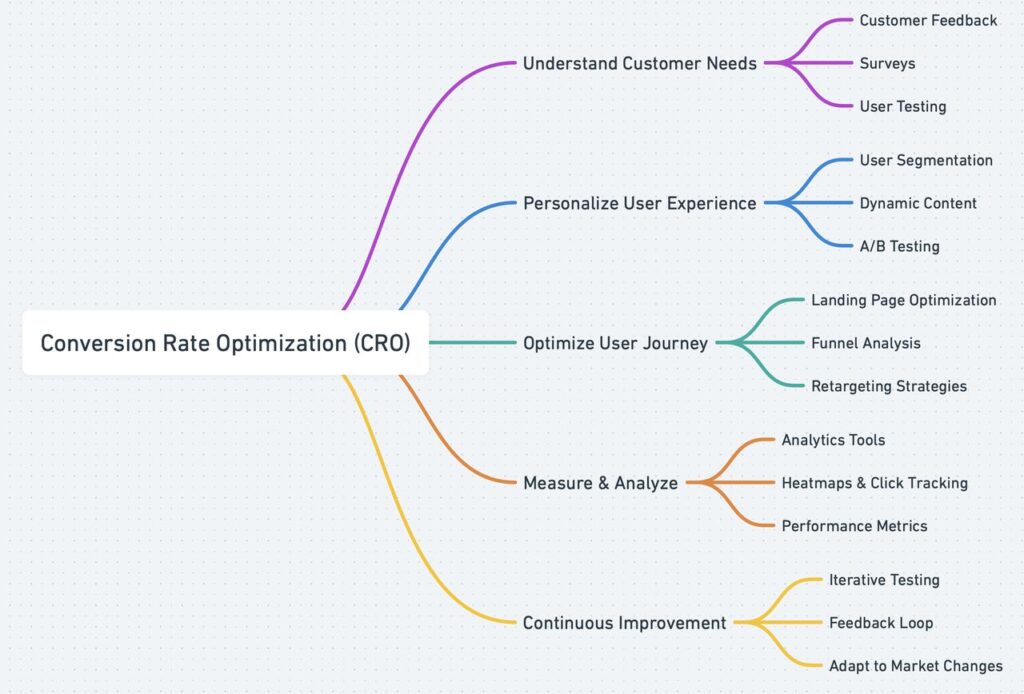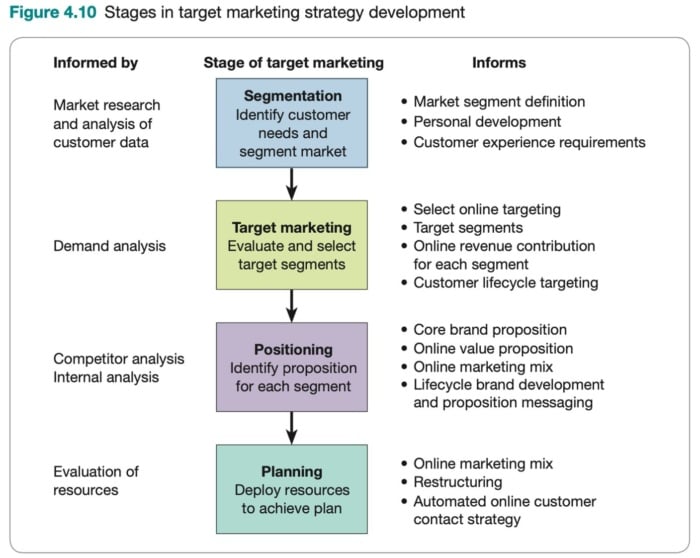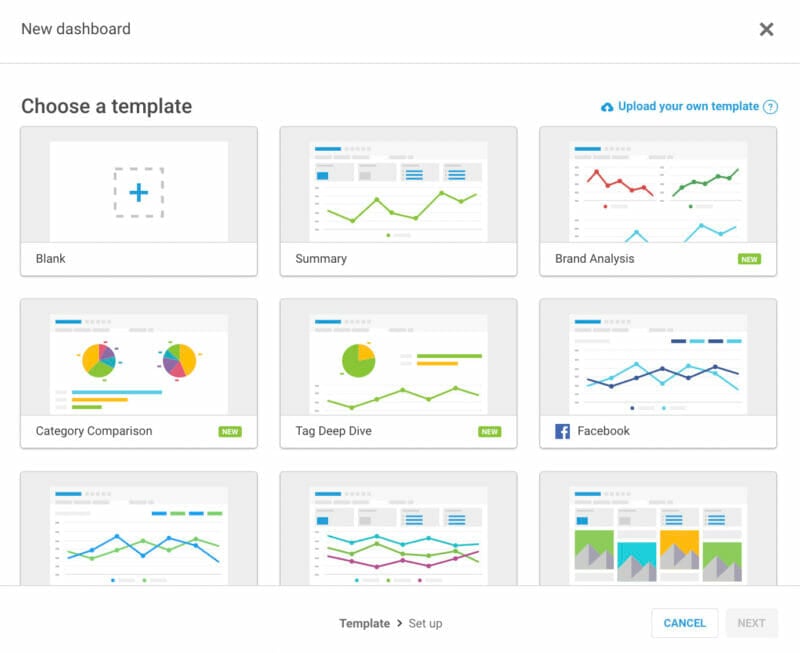
Published: Dec 2, 2024
How to Create a Killer Social Media Marketing Plan for 2025
How to Create a Killer Social Media Marketing Plan for 2025
I’ve seen more social media trends come and go than I’ve had hot dinners. But let me tell you, crafting a social media marketing plan that actually works? That’s the real meat and potatoes. So, buckle up, buttercup – I’m about to spill the beans on creating a social strategy that’ll make your brand the talk of the town (or at least the talk of the Twitter-verse).
TLDR: What are the key components of a successful social media marketing plan for 2025?
1️⃣ Set clear, measurable goals aligned with your overall business objectives
2️⃣ Identify and deeply understand your target audience across different platforms
3️⃣ Create a content strategy that leverages AI-driven personalization and interactive formats
Table of Contents
- Understanding the 2025 Social Media Landscape
- Setting Your Social Media Goals
- Choosing the Right Social Media Platforms
- Crafting Your Content Strategy
- Know Your Audience Inside and Out
- Content Pillars: Your Foundation for Success
- Mix Up Your Content Types
- Leverage AI for Personalization
- The 80/20 Rule: Value First, Promote Second
- Create a Content Calendar
- Embrace User-Generated Content (UGC)
- Optimize for Each Platform
- Measure, Analyze, Adjust
- Case Study: Wendy’s Twitter Success
- Measuring and Analyzing Performance
- Identifying Your Target Audience
- Dive Deep with Demographic Data
- Psychographics: The Secret Sauce
- Create Detailed Buyer Personas
- Leverage AI for Audience Insights
- Social Listening: Tune into the Conversation
- Analyze Your Current Audience
- Conduct Surveys and Polls
- Case Study: Glossier’s Community-Driven Success
- Look Beyond Your Current Customers
- Segment Your Audience
- Keep Your Finger on the Pulse
- Leveraging AI and Automation
- Staying Ahead of the Curve
Understanding the 2025 Social Media Landscape
The social media world of 2025 is a far cry from what we knew just a few years ago. It’s not just about posting cute cat videos anymore (though let’s be real, those will never go out of style). Let’s break down what’s shaking up the scene:
Metaverse Integration
Remember when we thought virtual reality was just for gamers? Well, it’s now a major player in social media marketing. Brands are creating immersive experiences that blur the lines between digital and physical:
- Virtual Stores
 Companies like Nike and Gucci have set up shop in virtual worlds, letting users try on digital versions of products.
Companies like Nike and Gucci have set up shop in virtual worlds, letting users try on digital versions of products. - Social VR Platforms Platforms like VRChat and AltspaceVR have exploded in popularity, hosting virtual events and meetups.
- Digital Avatars: People are investing serious cash in digital clothing and accessories for their online personas.
AI-Powered Personalization
AI isn’t just a buzzword anymore – it’s the backbone of effective social media strategies:
- Predictive Analytics AI algorithms are getting scary good at predicting what content will resonate with specific audience segments.
- Dynamic Content Creation: Tools like GPT-4 are pumping out personalized posts tailored to individual users’ interests.
- Chatbots
 Advanced AI assistants are handling customer service inquiries with human-like finesse.
Advanced AI assistants are handling customer service inquiries with human-like finesse.
Short-Form Video Dominance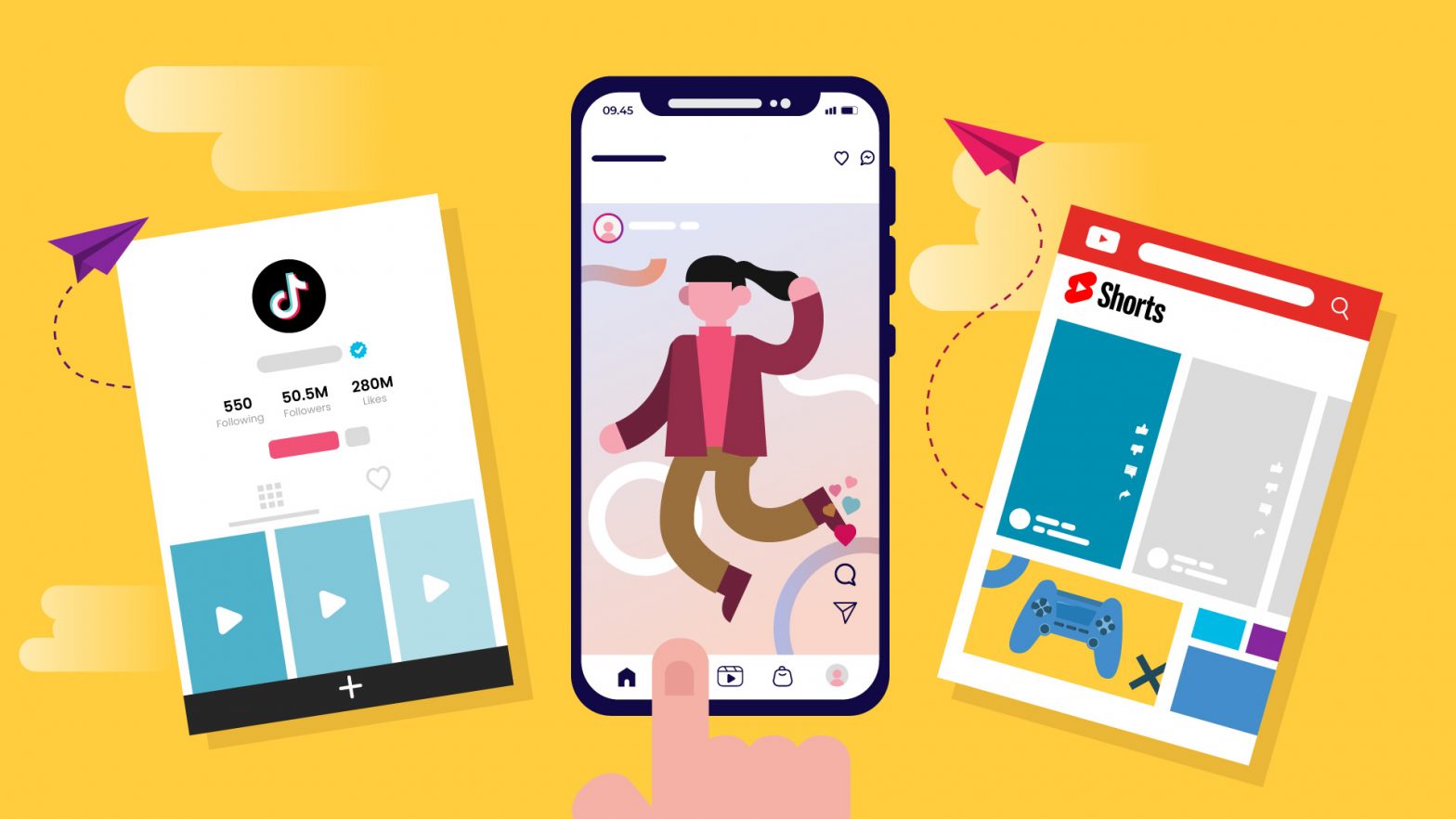
TikTok started the trend, but now short-form video is everywhere:
- Instagram Reels
 Instagram doubled down on Reels, making them central to the user experience.
Instagram doubled down on Reels, making them central to the user experience. - YouTube Shorts: Even the OG video platform got in on the action with its own short-form offering.
- Vertical Video Forget landscape mode – vertical is king for mobile-first consumption.
Social Commerce Evolution
Shopping and scrolling have become one and the same:
- Live Shopping Streams: Influencers are hosting QVC-style broadcasts, driving real-time sales.
- Augmented Reality Try-Ons Snapchat and Instagram filters let users virtually test products before buying.
- One-Click Purchasing: Social platforms have streamlined the buying process, making impulse purchases dangerously easy.
Ephemeral Content Comeback
Stories aren’t going anywhere, but they’re evolving:
- Disappearing Posts Platforms are experimenting with content that vanishes after 24 hours, creating a sense of urgency.
- Interactive Polls and Quizzes: Engagement is the name of the game, with brands using interactive features to boost participation.
- Behind-the-Scenes Content: Users crave authenticity, and ephemeral content is perfect for showing the “real” side of brands.
Niche Social Networks
While the big players still dominate, specialized platforms are on the rise:
- BeReal
 The anti-Instagram app continues to gain traction with its focus on unfiltered moments.
The anti-Instagram app continues to gain traction with its focus on unfiltered moments. - Discord
 Once just for gamers, it’s now a hub for all kinds of communities.
Once just for gamers, it’s now a hub for all kinds of communities. - Industry-Specific Networks: Platforms catering to specific professions or interests are popping up left and right.
Privacy and Data Concerns
Users are more aware than ever about their digital footprints:
- Data Transparency
 Brands that are upfront about data collection and usage are winning trust.
Brands that are upfront about data collection and usage are winning trust. - Decentralized Social Media Blockchain-based platforms promise users more control over their data.
- Privacy-Focused Features Platforms are introducing more options for users to control their privacy settings.
The 2025 social media landscape is a wild ride, folks. It’s not just about keeping up with the Kardashians anymore (though I’m sure they’re still doing just fine). Brands that can navigate this complex terrain, balancing innovation with authenticity and user privacy, are the ones that’ll come out on top. So, strap in and get ready to adapt – because in this game, the only constant is change.
Setting Your Social Media Goals
Let’s face it, diving into social media marketing without clear goals is like trying to navigate rush hour traffic blindfolded. You might get somewhere, but it probably won’t be where you wanted to go. So, let’s break down how to set goals that’ll actually move the needle for your business in 2025.
SMART Goals Framework
Remember SMART? It’s not just a buzzword – it’s your roadmap to success:
- Specific: Nail down exactly what you want to achieve
- Measurable: Make sure you can track your progress
- Achievable: Set goals that stretch you, but aren’t impossible
- Relevant: Align with your overall business objectives
- Time-bound: Give yourself a deadline
Common Social Media Goals for 2025
-
- Increase followers by 25% in 6 months
- Boost average post reach by 50% by Q4
-
- Achieve a 5% engagement rate on all posts by end of year
- Increase average comments per post from 10 to 30 within 3 months
-
- Generate 500 qualified leads from social media channels in Q2
- Increase click-through rate to landing pages by 15% in 6 months
-
- Drive $100,000 in revenue from social commerce features by EOY
- Increase conversion rate from social traffic by 10% in Q3
-
- Reduce average response time to under 2 hours by end of Q1
- Achieve a 95% customer satisfaction rating for social media interactions
Aligning Social Goals with Business Objectives
Your social media goals shouldn’t exist in a vacuum. They need to tie directly into your broader business strategy. For example:
- If your company aims to expand into new markets, your social goal might focus on growing followers in specific geographic regions.
- If you’re launching a new product line, your goals could center around generating buzz and pre-orders through social channels.
Tracking and Measuring Progress
Setting goals is just the start. You need a system to track your progress:
-
- Platforms like Hootsuite or Sprout Social offer comprehensive dashboards
- Native analytics on platforms like Facebook Insights or Twitter Analytics
Custom Reporting
- Create weekly or monthly reports to track key metrics
- Use data visualization tools to make trends easy to spot
Regular Check-ins
- Schedule monthly review meetings with your team
- Be prepared to pivot if certain strategies aren’t working
Case Study: Zoom’s 2020 Social Media Success
Remember when Zoom exploded during the pandemic? Their social media strategy played a huge role. They set clear goals:
- Increase brand awareness among non-business users
- Provide timely customer support to new users
- Showcase creative uses of their platform
The result? They saw a 2,900% increase in daily meeting participants. Their social channels became key in educating users and maintaining their meteoric growth.
Avoiding Common Pitfalls
- Don’t chase vanity metrics: Follower count means nothing if they’re not engaging
- Avoid setting too many goals: Focus on 3-5 key objectives at a time
- Don’t set it and forget it: Regularly review and adjust your goals
Remember, your social media goals should be living, breathing things. The digital landscape changes fast, and your objectives need to evolve with it. Stay flexible, stay focused, and don’t be afraid to shoot for the stars. After all, in the world of social media, sometimes the sky really is the limit.
Choosing the Right Social Media Platforms
Picking the right social media platforms is like choosing the perfect outfit for a big event. You want something that fits well, looks good, and suits the occasion. In the world of social media marketing, that means finding platforms that align with your brand, reach your target audience, and help you achieve your goals. Let’s break it down:
Still the big kahuna with over 2.9 billion monthly active users as of 2025. It’s great for:
- Reaching a broad, diverse audience
- Building community through groups
- Targeting ads with scary precision
But watch out - organic reach has been declining for years. You’ll likely need to pay to play.
The go-to platform for visual brands, with 1.5 billion users who love pretty pictures and short videos. Perfect if you’re:
- In fashion, food, travel, or lifestyle industries
- Targeting millennials and Gen Z
- Looking to leverage influencer marketing
Don’t forget to make use of Stories, Reels, and IGTV to keep your content fresh.
TikTok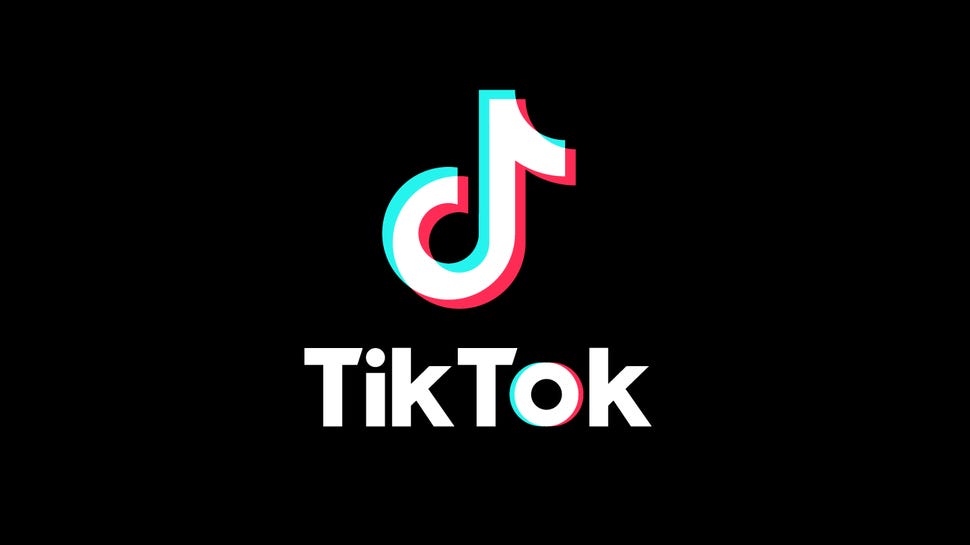
The fastest-growing platform, especially popular with Gen Z. It’s ideal for:
- Creating fun, authentic content
- Jumping on viral trends
- Reaching a younger demographic
Just be prepared to put in the work - success on TikTok often requires consistent, creative content.
LinkedIn
The professional’s playground, with 900 million members worldwide. Great for:
- B2B marketing
- Thought leadership content
- Recruiting top talent
Remember, LinkedIn users are looking for valuable, industry-specific content. Save the memes for other platforms.
Twitter
The place for real-time conversation and news, with 450 million monthly active users. It’s perfect if you want to:
- Engage in timely discussions
- Provide customer service
- Share quick updates and news
But be ready to post frequently - the average lifespan of a tweet is just 18 minutes.
YouTube
The second-largest search engine after Google, with 2.5 billion monthly active users. Ideal for:
- Long-form video content
- Tutorial and how-to videos
- Building a loyal subscriber base
Quality matters here - invest in good equipment and editing software.
A visual search engine with 450 million monthly active users. Great for:
- Driving traffic to your website
- E-commerce businesses
- DIY, home decor, and recipe content
Remember to optimize your pins for search - use relevant keywords in your descriptions.
Matching Platforms to Your Brand
Know your audience: Use tools like Sprout Social or Hootsuite to analyze where your target demographic spends their time.
Understand platform strengths: Each platform has its own content style and audience expectations. Don’t try to force a square peg into a round hole.
Consider your resources: Managing multiple platforms takes time and effort. It’s better to do one or two platforms well than spread yourself too thin.
Analyze your competitors: Where are they active? Where are they seeing success? Use tools like Socialbakers to spy on their performance.
Test and learn: Don’t be afraid to experiment with new platforms. Set up a pilot program and measure results before committing fully.
Case Study: Duolingo’s TikTok Success
Duolingo, the language learning app, absolutely crushed it on TikTok. They created a persona for their owl mascot that was sassy, slightly unhinged, and totally hilarious. The result? Over 5 million followers and insane brand awareness among Gen Z. They recognized that TikTok’s playful vibe was perfect for showcasing their brand personality in a way that wouldn’t work on other platforms.
Emerging Platforms to Watch
BeReal
 The anti-Instagram app that prompts users to post unfiltered photos at random times.
The anti-Instagram app that prompts users to post unfiltered photos at random times.Clubhouse
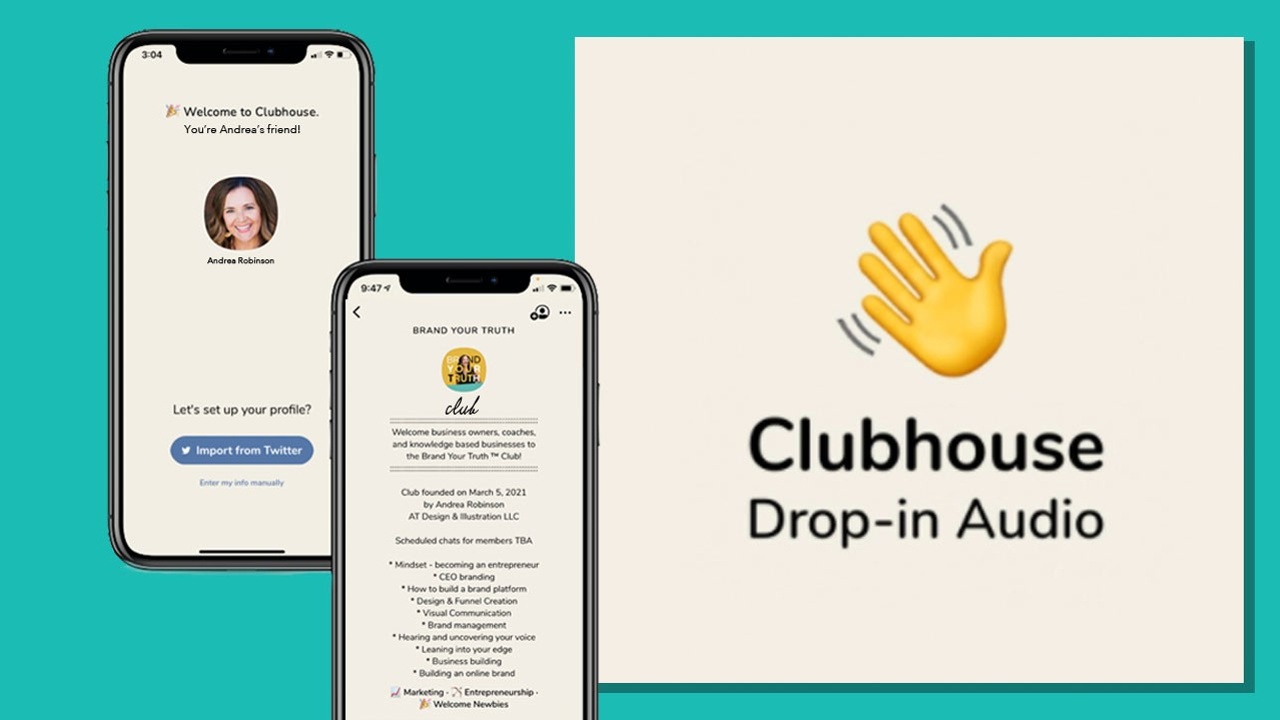 Audio-based social networking that’s evolved since its 2020 boom.
Audio-based social networking that’s evolved since its 2020 boom.Discord Originally for gamers, now used by all kinds of communities.
Remember, it’s not about being everywhere - it’s about being where your audience is, with content that resonates. Choose wisely, create thoughtfully, and always be ready to adapt. The social media landscape is always changing, and the brands that thrive are the ones that can change with it.
Crafting Your Content Strategy
Let’s face it, creating content that stands out in the social media jungle of 2025 is no walk in the park. But with the right strategy, you can turn your social feeds into a content powerhouse that keeps your audience coming back for more. Here’s how to craft a content strategy that’ll make your competitors green with envy:
Know Your Audience Inside and Out
First things first, you’ve got to get inside your audience’s heads. What makes them tick? What problems keep them up at night? Use tools like Google Analytics and Facebook Audience Insights to dig deep into your audience’s demographics, interests, and behaviors.
- Create detailed buyer personas
- Analyze your top-performing content
- Conduct surveys and polls to get direct feedback
Content Pillars: Your Foundation for Success
Think of content pillars as the main themes or topics that’ll form the backbone of your strategy. For a fitness brand, these might include:
By focusing on these core themes, you’ll keep your content focused and aligned with your brand’s goals.
Mix Up Your Content Types
Variety is the spice of life, and it’s the secret sauce of a great content strategy. Don’t just stick to one format – mix it up to keep things fresh:
- Short-form Video: Think TikTok and Instagram Reels
- Long-form Video: YouTube tutorials or behind-the-scenes content
- Live Streaming: Q&A sessions or product launches
- Static Images: Infographics or motivational quotes
- User-Generated Content: Reshare posts from your community
- Interactive Content: Polls, quizzes, or AR filters
Leverage AI for Personalization
In 2025, AI isn’t just a nice-to-have – it’s a must-have. Use AI-powered tools to:
- Generate personalized content recommendations
- Create custom video scripts
- Optimize posting times for maximum engagement
Tools like Jasper or Copy.ai can help you create AI-assisted content that feels human and relatable.
The 80/20 Rule: Value First, Promote Second
Nobody likes a constant sales pitch. Follow the 80/20 rule:
- 80% of your content should provide value, entertain, or educate
- 20% can be promotional or sales-focused
This builds trust and keeps your audience engaged, making them more receptive when you do pitch your products or services.
Create a Content Calendar
Consistency is key in social media. Use a content calendar to plan out your posts in advance. This helps you:
- Maintain a consistent posting schedule
- Align content with important dates or events
- Ensure a good mix of content types
Tools like Hootsuite or Sprout Social can help you schedule and manage your content across multiple platforms.
Embrace User-Generated Content (UGC)
Your customers can be your best content creators. Encourage UGC by:
- Running contests or challenges
- Creating branded hashtags
- Featuring customer stories
GoPro does this brilliantly, regularly featuring stunning user-submitted videos on their social channels.
Optimize for Each Platform
One size doesn’t fit all in social media. Tailor your content for each platform:
- Instagram Visual-heavy, perfect for behind-the-scenes content
- LinkedIn Professional tone, industry insights
- Twitter Short, snappy updates, great for customer service
Measure, Analyze, Adjust
Your content strategy should be a living, breathing thing. Regularly analyze your performance using platform-specific analytics tools. Look at metrics like:
- Engagement rate
- Reach and impressions
- Click-through rate
- Conversion rate
Use these insights to refine your strategy and double down on what’s working.
Case Study: Wendy’s Twitter Success
Wendy’s turned their Twitter account into a marketing goldmine with their sassy, irreverent tone. They didn’t just post about burgers – they roasted competitors, engaged in witty banter with followers, and created memorable moments that went viral. The result? A massive following and a distinct brand personality that sets them apart in the fast-food world.
Remember, the best content strategy is one that’s uniquely yours. Don’t be afraid to inject your brand’s personality and take calculated risks. In the ever-changing world of social media, authenticity and creativity will always win the day. Now go out there and create some content magic!
Measuring and Analyzing Performance
Let’s face it - if you’re not measuring your social media performance, you might as well be shouting into the void. In 2025, data is king, and knowing how to interpret it can make or break your social strategy. Here’s how to turn those numbers into actionable insights:
Key Performance Indicators (KPIs) That Matter
Forget vanity metrics. These are the numbers that’ll actually tell you if you’re moving the needle:
-
- Likes, comments, shares divided by total followers
- Aim for 1-5% on Instagram, 0.5-1% on Facebook
-
- Percentage of people who click your link after seeing your post
- Industry average is about 1.6% for Facebook ads
-
- How many followers actually take your desired action?
- E-commerce average is around 2-3%
-
- Number of unique users who saw your content
- Compare organic reach vs. paid reach
-
- How much of the conversation in your industry are you owning?
- Use tools like Brandwatch to track this
Tools of the Trade
You don’t need a data science degree to analyze your performance. These tools make it easy:
- Google Analytics

- Free and powerful for tracking website traffic from social
- Hootsuite Insights
- Great for tracking mentions and sentiment across platforms
- Sprout Social
- Robust reporting and analytics across multiple channels
- Socialbakers
- AI-powered analytics with competitive benchmarking
Setting Up a Reporting Dashboard
Don’t drown in data. Create a custom dashboard that gives you a bird’s-eye view of your performance:
- Choose your top 5-7 KPIs
- Set up weekly, monthly, and quarterly reports
- Use data visualization tools like Tableau or Google Data Studio to make the numbers digestible
A/B Testing: Your Secret Weapon
Think you know what your audience wants? Test it. A/B testing lets you compare two versions of a post to see which performs better. Test things like:
- Different images or video thumbnails
- Varied call-to-action phrases
- Long vs. short captions
- Posting times
Facebook’s Experiments tool makes this easy for ads, but you can manually test organic content too.
Competitive Analysis
Don’t just navel-gaze at your own metrics. Keep an eye on the competition:
- Use tools like Socialbakers or Sprout Social for competitive analysis
- Track their follower growth, engagement rates, and content strategy
- Identify gaps in their strategy that you can exploit
The Art of Social Listening
Sometimes, the most valuable insights come from what people are saying about you when you’re not looking:
- Use tools like Mention or Talkwalker to track brand mentions
- Monitor industry hashtags and keywords
- Analyze sentiment to gauge public perception of your brand
Case Study: Airbnb’s Data-Driven Content Strategy
Airbnb knocked it out of the park with their data-driven approach to Instagram. They analyzed which types of photos got the most engagement and found that images of Airbnb interiors outperformed all others. They adjusted their content strategy accordingly, leading to a 341% increase in engagement over 8 months.
Turning Insights into Action
Data without action is just noise. Here’s how to make your metrics work for you:
- Identify trends: Look for patterns in your top-performing content
- Adjust your content mix: Double down on what’s working, cut what’s not
- Refine your targeting: Use demographic data to better reach your audience
- Optimize your posting schedule: Find your best times to post based on engagement data
- Inform your ad strategy: Use organic performance to guide your paid campaigns
Remember, measuring your social media performance isn’t about obsessing over numbers - it’s about understanding your audience and continuously improving your strategy. Stay curious, keep testing, and don’t be afraid to pivot when the data tells you to. In the fast-paced world of social media, the brands that thrive are the ones that listen to what the numbers are saying.
Identifying Your Target Audience
Let’s face it, trying to appeal to everyone is like throwing spaghetti at the wall and hoping something sticks. In 2025, the key to social media success is laser-focused targeting. Here’s how to zero in on your ideal audience and create content that speaks directly to their souls:
Dive Deep with Demographic Data
Start with the basics, but don’t stop there. Tools like Facebook Audience Insights and Google Analytics can reveal:
- Age and gender breakdowns
- Geographic locations
- Income levels
- Education
- Job titles
But remember, demographics are just the tip of the iceberg.
Psychographics: The Secret Sauce
This is where things get juicy. Psychographics dive into the why behind your audience’s behavior:
- Values and beliefs
- Hobbies and interests
- Lifestyle choices
- Pain points and challenges
Tools like YouGov Profiles can give you deep psychographic insights.
Create Detailed Buyer Personas
Now, let’s bring your audience to life. Create 3-5 detailed personas that represent your ideal customers. For example:
-
- 28-year-old urban professional
- Passionate about sustainability
- Values experiences over material possessions
- Challenges: Finding ethical brands that align with her values
-
- 35-year-old IT manager
- Early adopter of new technologies
- Active on Twitter and Reddit
- Pain point: Staying ahead of the curve in a fast-paced industry
Leverage AI for Audience Insights
In 2025, AI isn’t just a buzzword – it’s a powerful tool for understanding your audience. Platforms like IBM Watson Personality Insights can analyze social media data to reveal personality traits, values, and needs.
Social Listening: Tune into the Conversation
Don’t just guess what your audience is talking about – listen! Tools like Brandwatch or Sprout Social can help you:
- Track mentions of your brand and competitors
- Identify trending topics in your industry
- Understand sentiment around key issues
Analyze Your Current Audience
Your existing followers are a goldmine of information. Use platform-specific analytics to understand:
- Which posts get the most engagement
- When your audience is most active
- What types of content they share
Instagram Insights and Twitter Analytics are great starting points.
Conduct Surveys and Polls
Sometimes, the best way to understand your audience is to ask them directly. Use tools like SurveyMonkey or native platform features like Instagram Story polls to gather insights.
Case Study: Glossier’s Community-Driven Success
Glossier, the beauty brand that took the world by storm, built its empire on a deep understanding of its audience. They created a “Glossier Girl” persona – millennial, beauty-savvy, and looking for authentic, relatable content. By fostering a sense of community and actively involving their audience in product development, they’ve grown a cult following.
Look Beyond Your Current Customers
Don’t forget about potential audiences. Tools like SparkToro can help you discover:
- Influencers your target audience follows
- Podcasts they listen to
- Websites they frequently visit
This can open up new avenues for partnerships and content ideas.
Segment Your Audience
Remember, your audience isn’t a monolith. Use segmentation to tailor your content:
- Behavioral Segmentation
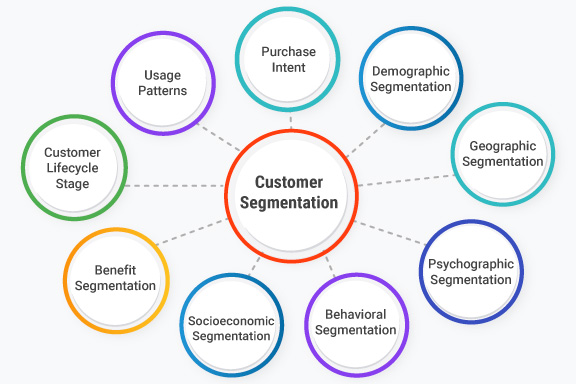
- Based on purchasing habits, brand interactions, etc.
- Lifecycle Segmentation
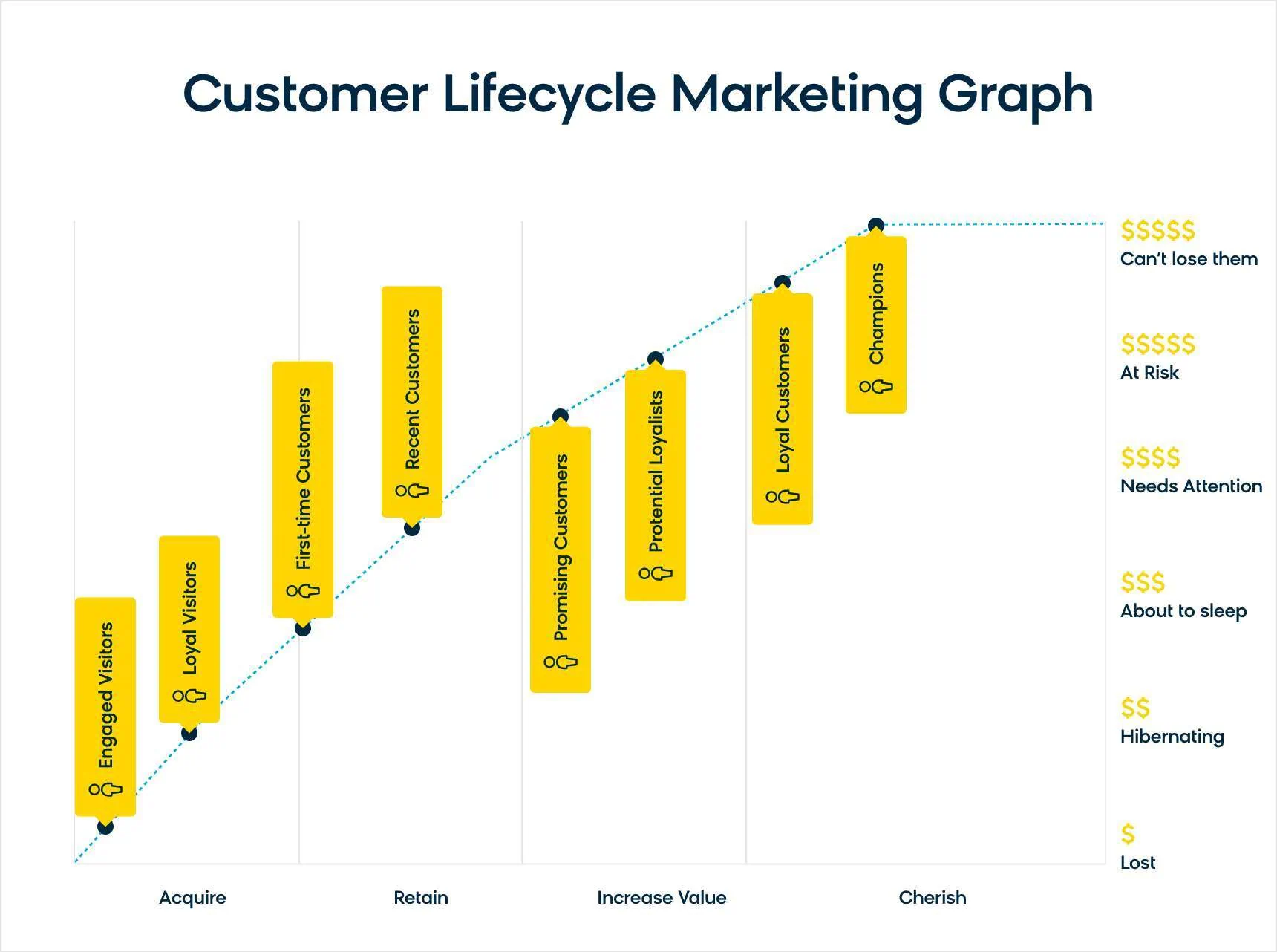
- Tailor content for new followers vs. long-time customers
- Interest-Based Segmentation
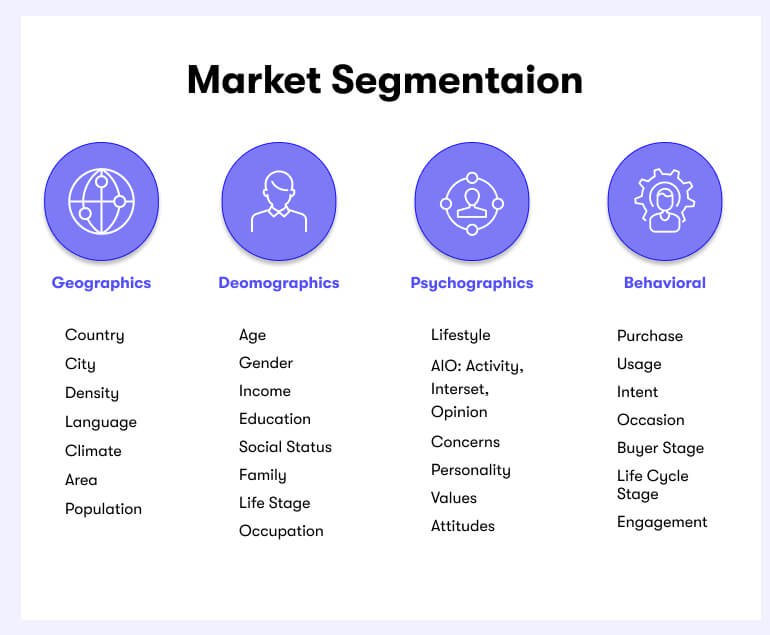
- Create content buckets for different interest groups within your audience
Keep Your Finger on the Pulse
Audience preferences change fast. Set up a system for ongoing audience analysis:
- Monthly review of audience insights
- Quarterly surveys to gauge changing interests
- Annual deep-dive into demographic and psychographic data
Remember, understanding your audience isn’t a one-and-done deal. It’s an ongoing process of listening, analyzing, and adapting. The brands that win on social media in 2025 are the ones that make their audience feel truly seen and understood. So, dive deep, stay curious, and never stop learning about the amazing people you’re trying to reach. Your perfectly tailored content strategy awaits!
Leveraging AI and Automation
Let’s face it, trying to manage social media without AI and automation in 2025 is like trying to win a drag race with a horse and buggy. It’s time to supercharge your strategy with some serious tech. Here’s how to leverage AI and automation to take your social media game to the next level:
AI-Powered Content Creation
Gone are the days of staring at a blank screen, wondering what to post. AI tools are now your creative wingman:
-
- Generates everything from social media captions to full blog posts
- Uses GPT-3 technology to create human-like text
-
- Creates unique images from text descriptions
- Perfect for eye-catching visuals that stand out in feeds
-
- Transforms blog posts into engaging video content
- Uses AI to select relevant visuals and create animations
Chatbots and Customer Service Automation
Your customers expect 24/7 support, but you can’t clone yourself. Enter AI chatbots:
-
- Builds chatbots for Facebook Messenger, Instagram, and SMS
- Handles FAQs, lead generation, and appointment booking
-
- Combines live chat with AI-powered chatbots
- Seamlessly hands off complex queries to human agents
Predictive Analytics
Stop guessing what your audience wants. Let AI tell you:
-
- Uses AI to predict the best times to post for maximum engagement
- Analyzes past performance to recommend content types
-
- Predicts which visuals will perform best with your audience
- Recommends hashtags and captions based on AI analysis
Automated Posting and Scheduling
Save time and maintain consistency with smart scheduling tools:
-
- Allows bulk uploading and scheduling across multiple platforms
- Uses AI to recommend optimal posting times
-
- Offers a simple, visual content calendar
- Provides analytics to track post performance
Social Listening and Sentiment Analysis
Keep your finger on the pulse of your audience with AI-powered listening tools:
-
- Monitors brand mentions across social media and the web
- Uses AI to analyze sentiment and identify trends
-
- Tracks conversations in 187 languages
- Offers image recognition to find untagged brand mentions
Automated Ad Optimization
Stop wasting ad spend. Let AI optimize your campaigns:
-
- Automates ad creation and optimization across social platforms
- Uses machine learning to allocate budget to top-performing ads
-
- Offers rule-based automation for Facebook and Instagram ads
- Automatically adjusts bids and budgets based on performance
Influencer Marketing Automation
Find the perfect brand ambassadors without the headache:
-
- Uses AI to match brands with relevant influencers
- Analyzes influencer audiences for authenticity and engagement
-
- Manages influencer campaigns from discovery to reporting
- Offers fraud detection to ensure authentic partnerships
Case Study: Sephora’s Virtual Artist
Sephora knocked it out of the park with their Virtual Artist feature. This AI-powered tool lets users virtually try on makeup products using augmented reality. It’s not just a cool gimmick – it drove real results. Sephora saw a 28% increase in conversions when shoppers used the feature. It’s a perfect example of how AI can create engaging experiences that also drive sales.
Balancing Automation with Authenticity
Remember, while AI and automation are powerful tools, they shouldn’t replace the human touch entirely:
- Use AI for content ideas, but add your brand’s unique voice
- Let chatbots handle simple queries, but have humans step in for complex issues
- Use predictive analytics to inform your strategy, but trust your instincts too
The key is to use these tools to enhance your strategy, not to run it on autopilot. After all, social media is about being social – and that still requires a human touch.
By leveraging AI and automation, you’re not just saving time and resources – you’re gaining insights and capabilities that were impossible just a few years ago. So embrace the tech, but don’t forget to keep it real. Your audience will thank you for it.
Staying Ahead of the Curve
In the ever-evolving world of social media, standing still is the same as moving backward. To keep your brand at the forefront, you need to be a trendsetter, not a follower. Here’s how to stay ahead of the curve and keep your social media strategy fresh in 2025 and beyond:
Embrace Emerging Platforms Early
Don’t wait for the next big thing to become mainstream. Be an early adopter:
-
- This “anti-Instagram” app prompts users to post unfiltered photos at random times
- Perfect for brands looking to showcase authenticity
-
- Audio-based social networking that’s evolved since its 2020 boom
- Great for hosting industry talks or Q&A sessions
-
- Originally for gamers, now used by all kinds of communities
- Ideal for building engaged, niche communities around your brand
Leverage Cutting-Edge Tech
The future of social media is intertwined with emerging technologies:
-
- Create immersive experiences like virtual try-ons or interactive filters
- Snapchat’s AR lenses are a prime example of this in action
-
- Host virtual events or product launches in the metaverse
- Meta’s Horizon Worlds is paving the way for VR social experiences
-
- Use AI-powered tools like ChatGPT for content creation and customer service
- Implement predictive analytics to anticipate trends and audience behavior
Stay Informed with Industry News
Make it a habit to stay updated on the latest social media trends and updates:
- Follow industry leaders on LinkedIn and Twitter
- Subscribe to newsletters like Social Media Today and Mashable
- Attend virtual conferences like Social Media Marketing World
Experiment Constantly
Don’t be afraid to try new things. Set aside a “test budget” for experimental campaigns:
-
- Create branded hashtag challenges to boost engagement
- Chipotle’s #GuacDance challenge garnered 250,000 video submissions
-
- Experiment with different video formats and styles
- Use trending audio to increase discoverability
-
- Host live audio conversations with your audience
- Great for Q&As or behind-the-scenes content
Prioritize Data Privacy and Security
With increasing concerns about data privacy, stay ahead by prioritizing user trust:
- Be transparent about data collection and usage
- Implement robust security measures to protect user information
- Stay compliant with regulations like GDPR and CCPA
Adapt to Algorithm Changes
Social media algorithms are constantly evolving. Stay agile:
- Keep an eye on platform updates and adjust your strategy accordingly
- Diversify your content to reduce reliance on any single algorithm
- Focus on creating genuine engagement rather than chasing vanity metrics
Collaborate and Cross-Pollinate
Don’t operate in a silo. Collaborate with other brands and influencers:
-
- Team up with complementary brands for joint campaigns
- Example:GoPro and Red Bull’s Stratos space jump collaboration
-
- Work with micro-influencers for authentic, niche reach
- Use tools like AspireIQ to find relevant influencers
Invest in Social Commerce
As social platforms become shopping destinations, be ready to sell:
- Set up Instagram Shops or Facebook Shops
- Use Pinterest’s shoppable pins for product discovery
- Explore live shopping features on platforms like TikTok
Case Study: Spotify’s Wrapped Campaign
Spotify’s annual Wrapped campaign is a masterclass in staying ahead of the curve. By leveraging user data to create personalized, shareable content, they’ve turned a year-end recap into a cultural moment. The campaign consistently trends on social media, with users eager to share their listening habits. In 2022, Spotify added new features like your “Listening Personality” to keep the concept fresh and engaging.
Remember, staying ahead of the curve isn’t just about chasing the latest trends. It’s about understanding your audience deeply, being willing to take calculated risks, and always keeping an eye on the horizon. By staying curious, adaptable, and innovative, you’ll not only keep up with the rapidly changing social media landscape – you might just set the pace for others to follow.








